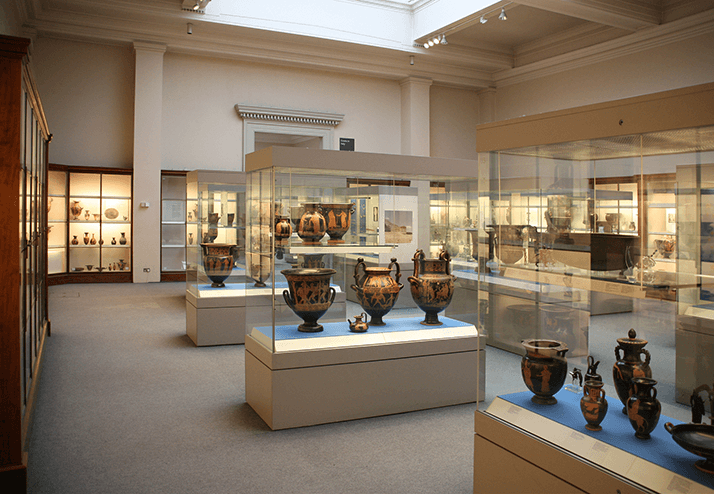Summary
This Application Note discusses assessment of volatile organic compounds emitted from the materials used in the manufacture of museum display cases, which can have a detrimental impact upon the condition of the artefacts within them. We describe how sampling devices such as Markes’ Micro-Chamber/ Thermal Extractor, used in conjunction with analysis by thermal desorption–gas chromatography–mass spectrometry (TD–GC–MS) can allow rapid and convenient sampling of such chemicals from the wide range of construction materials used in these cases, and how new test schemes are being used by industry to certify these materials.

Introduction
Museum artefacts need to be protected against a range of environmental influences, including cigarette smoke, exhaust gases, spores, pollen, dust, smoke particles, excess moisture, and volatile organic compounds (VOCs) from skin and breath. To achieve this, airtight display cases are widely used, with very low air exchange rates. However, these low air exchange rates are only beneficial if the materials used to construct the display case are themselves low-emitting. If not, concentrations of undesirable VOCs can build up, resulting in damage to the artefact. The situation is made particularly complicated by the fact that some artefacts can themselves emit undesirable chemicals.Chemicals of particular concern include formic acid, acetic acid, nitrogen dioxide and formaldehyde, which have been linked with the corrosion of metals, calcareous objects and cellulosebased artefacts such as paper. However, the need to detect chemicals also extends more widely, and includes highly volatile residual solvents in the materials used to construct the cases, and semi-volatile pesticides formerly used for pest control. Given this situation and the large amount of research currently being conducted in this area, there has been considerable demand for rapid methods to test the materials used to construct display cases, and for a set of standards to apply when assessing them. An example of such a method is the BEMMA assessment scheme.

The BEMMA scheme
The German materials research institute BAM (Bundesanstalt für Materialforschung und -prüfung [The Federal Institute for Materials Research and Testing]) has recently developed a new scheme for assessing museum display case construction materials. This scheme, known as BEMMA (Bewertung von Emissionen aus Materialien für Museumsausstattungen [Assessment of emissions from materials for museum equipment]),1 comprises guidelines for carrying out analytical methods, and for applying limit levels for various chemical classes. As a result, it is expected to be an effective decision-making tool for curators, restorers and conservators involved in the selection and use of exhibition showcases, storage facilities and transport packaging for art and cultural artefacts, as well as those responsible for planning or specifying performance criteria for these materials. Under the BEMMA scheme, individual materials are examined prior to construction of the display case, minimising the risk of having to resolve issues with a material after expensive manufacturing processes have been carried out.
Methods and materials covered under BEMMA
Five methods for sampling and analysis are specified under BEMMA:
- Micro-Chamber/Thermal Extractor™ and TD–GC–MS – For assessing VOCs and SVOCs from materials.
- Derivatisation and LC–MS – For formic acid and acetic acid.
- Pumped sampling onto Tenax® tubes and TD–GC–MS – For assessing VOCs and SVOCs from the cabinet air.
- DNPH cartridges and HPLC – For aldehydes, ketones, VVOCs and VOCs.
- Derivatisation and HPLC – For isocyanates.
BEMMA is applicable to a wide range of materials, including:
- Textiles.
- Plastics.
- Sealants (e.g. silicone).
- Coatings.
- Other materials (e.g. glue).





